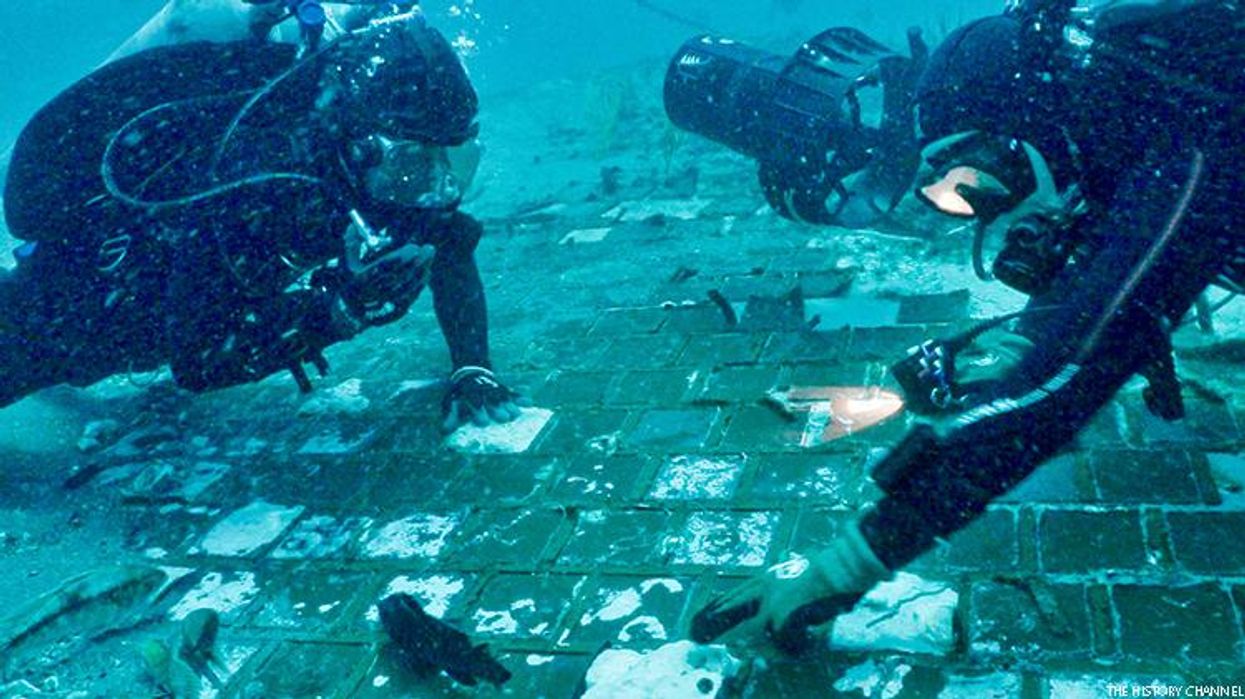News
Debris from Space Shuttle Challenger Just Discovered in Ocean

NASA debating next steps after documentary crew found the 20-foot-long piece of wreckage while searching for World War II artifacts.
November 11 2022 2:00 AM EST
By continuing to use our site, you agree to our Privacy Policy and Terms of Use.

NASA debating next steps after documentary crew found the 20-foot-long piece of wreckage while searching for World War II artifacts.
(CNN) – Explorers trudged the Atlantic Ocean searching for World War II artifacts lost at sea, but they stumbled on something else – a 20-foot-long piece of debris from the Space Shuttle Challenger, which was destroyed shortly after takeoff in 1986.
The History Channel and NASA revealed Thursday that the Challenger segment was discovered off Florida's east coast during the filming of a new series called The Bermuda Triangle: Into Cursed Waters. The series is set to premiere this month on the History Channel.
The Challenger broke apart after its launch on January 28, 1986, killing all seven crew members aboard, including a teacher who was set to become the first civilian in space. TV viewers, especially students in schools across the US, watched a live broadcast of the blast in horror that morning.
“NASA currently is considering what additional actions it may take regarding the artifact that will properly honor the legacy of Challenger’s fallen astronauts and the families who loved them,” the space agency said in a news release.
Mike Barnette, an underwater explorer who led the crew that found the shuttle artifact, remembers watching the tragedy on TV in his high school classroom. He called it “sobering” to realize that his team found a scrap from the spacecraft — the first debris to be discovered since pieces from the shuttle washed ashore in 1996.
“I can almost smell the smells of that day,” Barnette told CNN in a phone interview Thursday, referring to the day the Challenger exploded. “It was just so burned into my brain.”
RELATED: Surprise Discovery Uncovered Near Wreck of Titanic
Barnette and his team of investigators set off in March to search suspected shipwreck sites in the Bermuda Triangle, a swath of the northern Atlantic Ocean said to be the site of dozens of shipwrecks and plane crashes. The team also set its sights on one area outside the triangle, just off Florida’s Space Coast, where NASA has launched rockets since its inception.
The team was searching for a WWII-era rescue plane that mysteriously disappeared in December 1945, but a more modern object partially covered by sand on the seafloor sparked interest and further investigation from the dive team, according to the History Channel.
During the first dive, Barnette said a storm caused the water to turn so murky it was like swimming in Guinness beer. “We had terrible visibility,” he said.
The divers carried out a second excursion in May and finally captured clear footage of the wreckage. They brought evidence of their discovery to retired NASA astronaut Bruce Melnick, a longtime friend of Barnette’s, who immediately suggested it could be detritus from the Challenger disaster.
Distinctive square tiles from the Challenger tipped the explorers off, suggesting they had uncovered a large chunk of the orbiter’s underbelly. The underbelly was coated in thousands of silicon tiles protecting the shuttle from heat as it returned into the Earth's atmosphere from space.
The team turned its findings over to NASA in August, and the space agency recently confirmed the origins of the debris after reviewing footage from the dive, according to a news release.
The final Challenger mission was set to carry seven people into space — NASA astronauts Francis “Dick” Scobee, Michael Smith, Ronald McNair, Ellison Onizuka, Judith Resnik, and Gregory Jarvis as well as Christa McAuliffe, a New Hampshire schoolteacher who was set to become the first citizen space shuttle passenger as part of a new NASA program.
But 73 seconds after takeoff from its Florida launch site, the Challenger exploded, killing everyone on board. A NASA investigation later revealed a rubber “O-ring” seal on one of Challenger’s solid rocket boosters had failed because it was exposed to unusually low temperatures while the space shuttle sat on the launchpad. It caused a leak of highly explosive gases, which ultimately led to the catastrophic explosion.
“While it has been nearly 37 years since seven daring and brave explorers lost their lives aboard Challenger, this tragedy will forever be seared in the collective memory of our country. For millions around the globe, myself included, Jan. 28, 1986, still feels like yesterday,” NASA Administrator Bill Nelson said in a statement.
“This discovery gives us an opportunity to pause once again, to uplift the legacies of the seven pioneers we lost, and to reflect on how this tragedy changed us. At NASA, the core value of safety is – and must forever remain – our top priority, especially as our missions explore more of the cosmos than ever before.”
The six-part series The Bermuda Triangle: Into Cursed Waters premieres at 10 p.m. ET on November 22 on the History Channel.
The-CNN-Wire
™ & © 2022 Cable News Network, Inc., a Warner Bros. Discovery Company. All rights reserved.